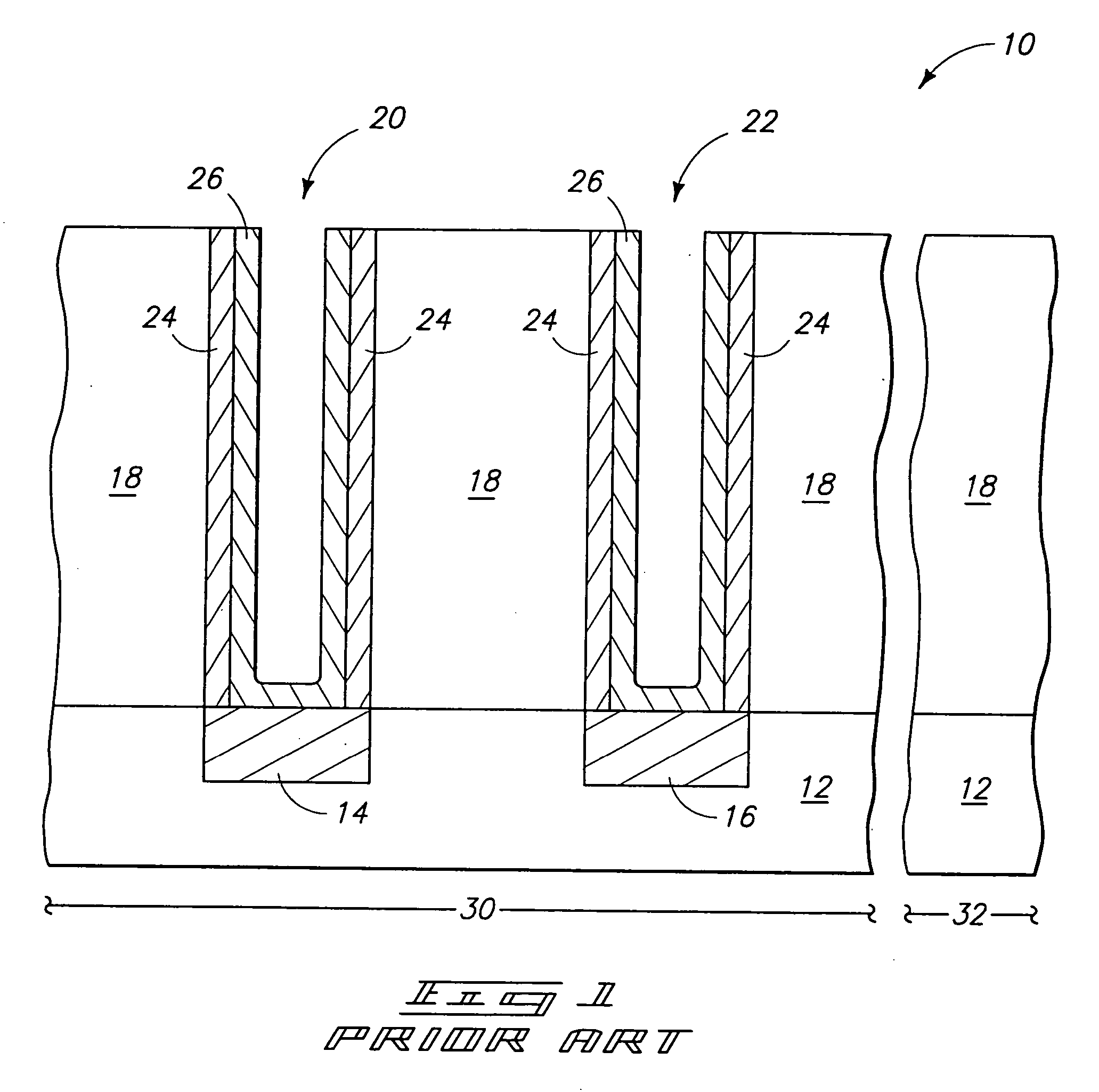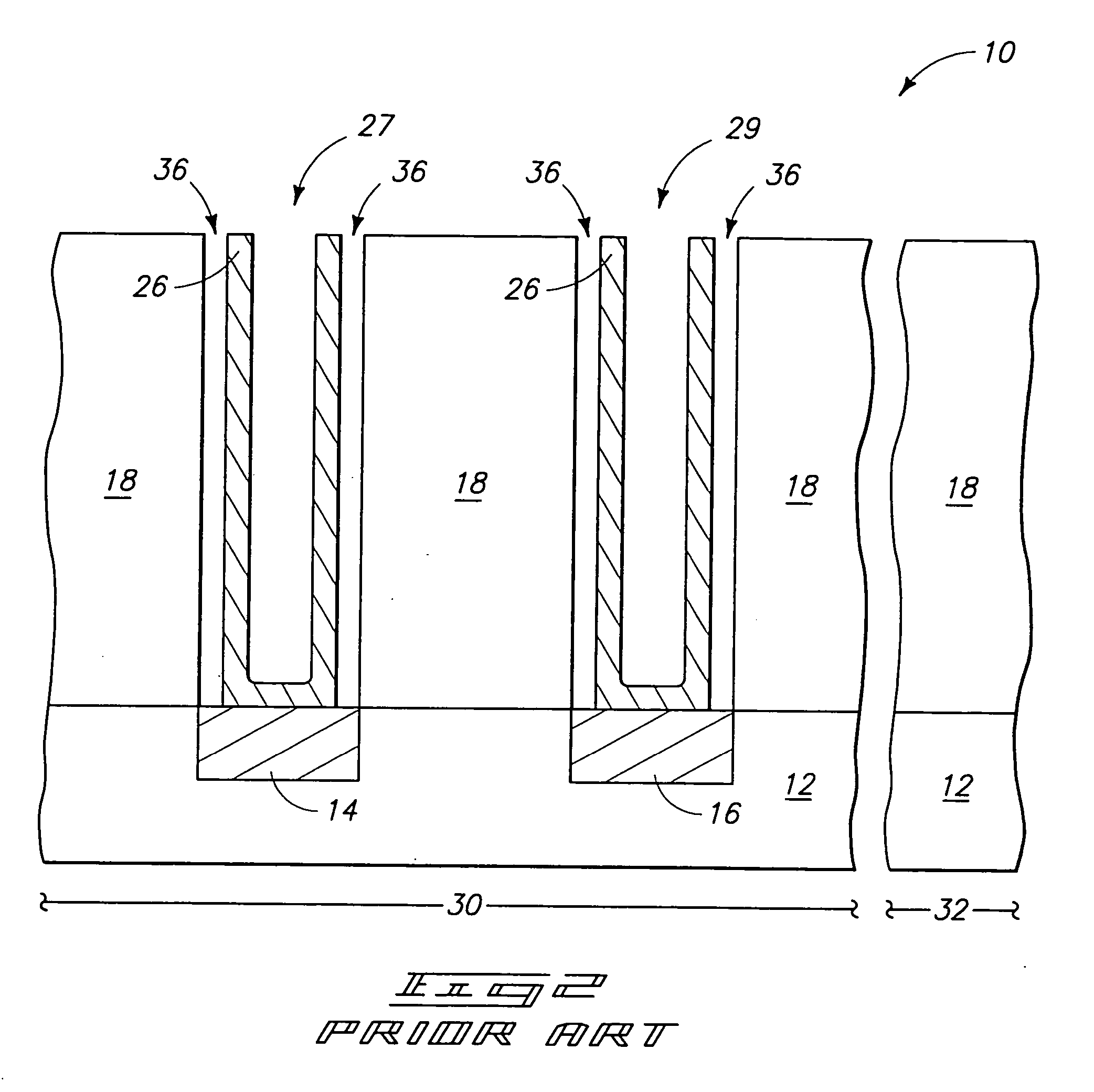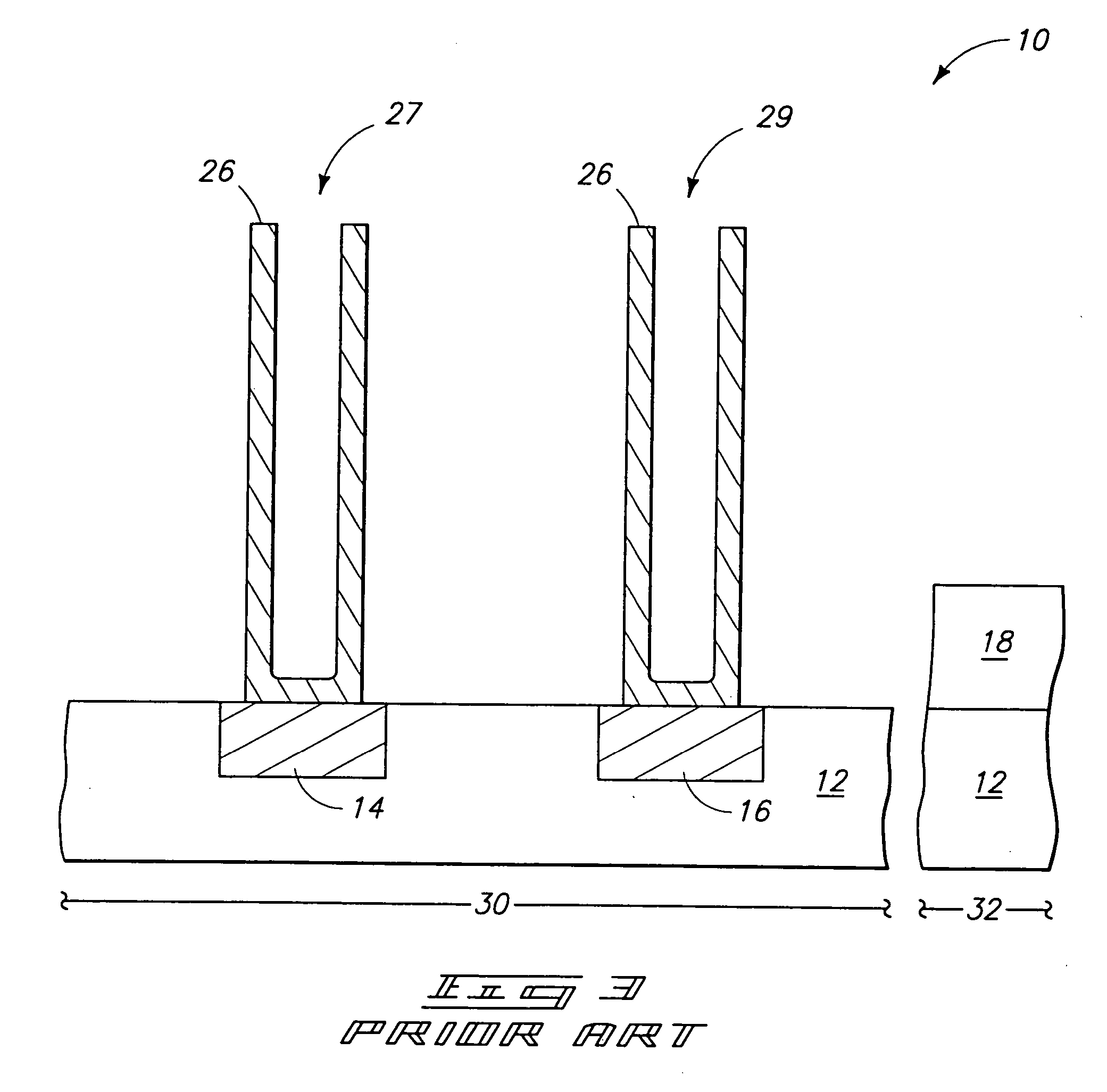Semiconductor fabrication processes
a technology of semiconductors and fabrication processes, applied in the direction of electrical equipment, basic electric elements, capacitors, etc., can solve the problems of increasing the problem of non-selectivity of etching, lack of suitably selective etching chemistry having a sufficiently high etching rate to perform in high aspect ratio features
- Summary
- Abstract
- Description
- Claims
- Application Information
AI Technical Summary
Benefits of technology
Problems solved by technology
Method used
Image
Examples
example 1
[0056] An etching solution is formed by mixing 400 parts of hydrogen peroxide with 5 parts of ammonium hydroxide. The hydrogen peroxide is 30 weight percent in water and the ammonium hydroxide is 29 weight percent in water. Accordingly, the final solution comprises approximately 30 weight percent hydrogen peroxide, 0.36 weight percent ammonium hydroxide, and 70 weight percent water.
example 2
[0057] An etching solution is formed by mixing 400 parts of hydrogen peroxide with 5 parts of tetra-methyl ammonium hydroxide. The hydrogen peroxide is 30 weight percent in water and the tetra-methyl ammonium hydroxide is 25 weight percent in water. Accordingly, the etching solution comprises 30 weight percent hydrogen peroxide, 0.31 weight percent tetra-methyl ammonium hydroxide, and 70 weight percent water.
example 3
[0058] An etching solution is formed by mixing 400 parts of hydrogen peroxide with 20 parts of hydrochloric acid. The hydrogen peroxide is 30 weight percent in water and the hydrochloric acid is 35 weight percent in water. Accordingly, the etching solution comprises about 29% hydrogen peroxide, 1.7% hydrochloric acid, and 69% water.
PUM
 Login to View More
Login to View More Abstract
Description
Claims
Application Information
 Login to View More
Login to View More - R&D
- Intellectual Property
- Life Sciences
- Materials
- Tech Scout
- Unparalleled Data Quality
- Higher Quality Content
- 60% Fewer Hallucinations
Browse by: Latest US Patents, China's latest patents, Technical Efficacy Thesaurus, Application Domain, Technology Topic, Popular Technical Reports.
© 2025 PatSnap. All rights reserved.Legal|Privacy policy|Modern Slavery Act Transparency Statement|Sitemap|About US| Contact US: help@patsnap.com



